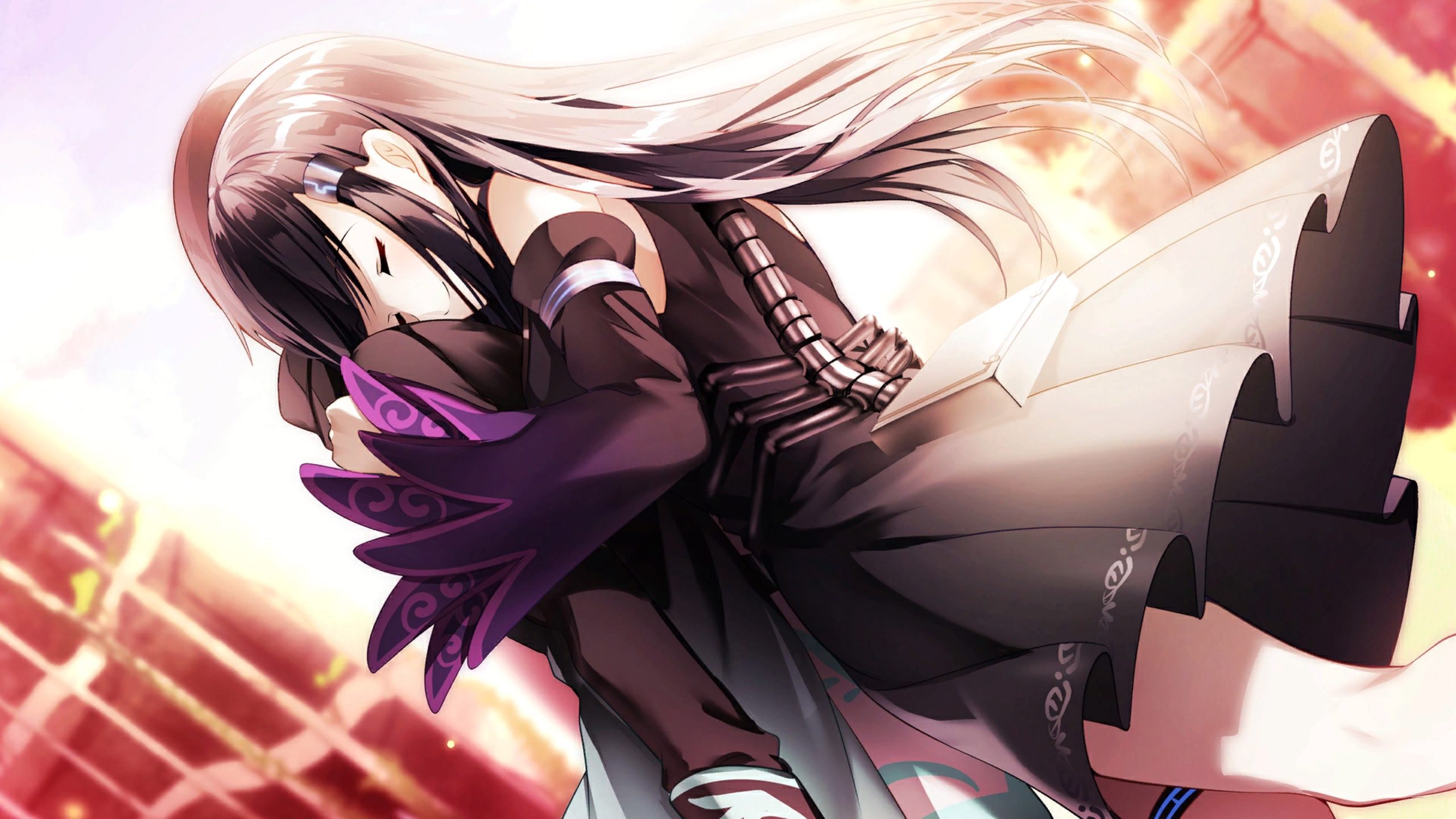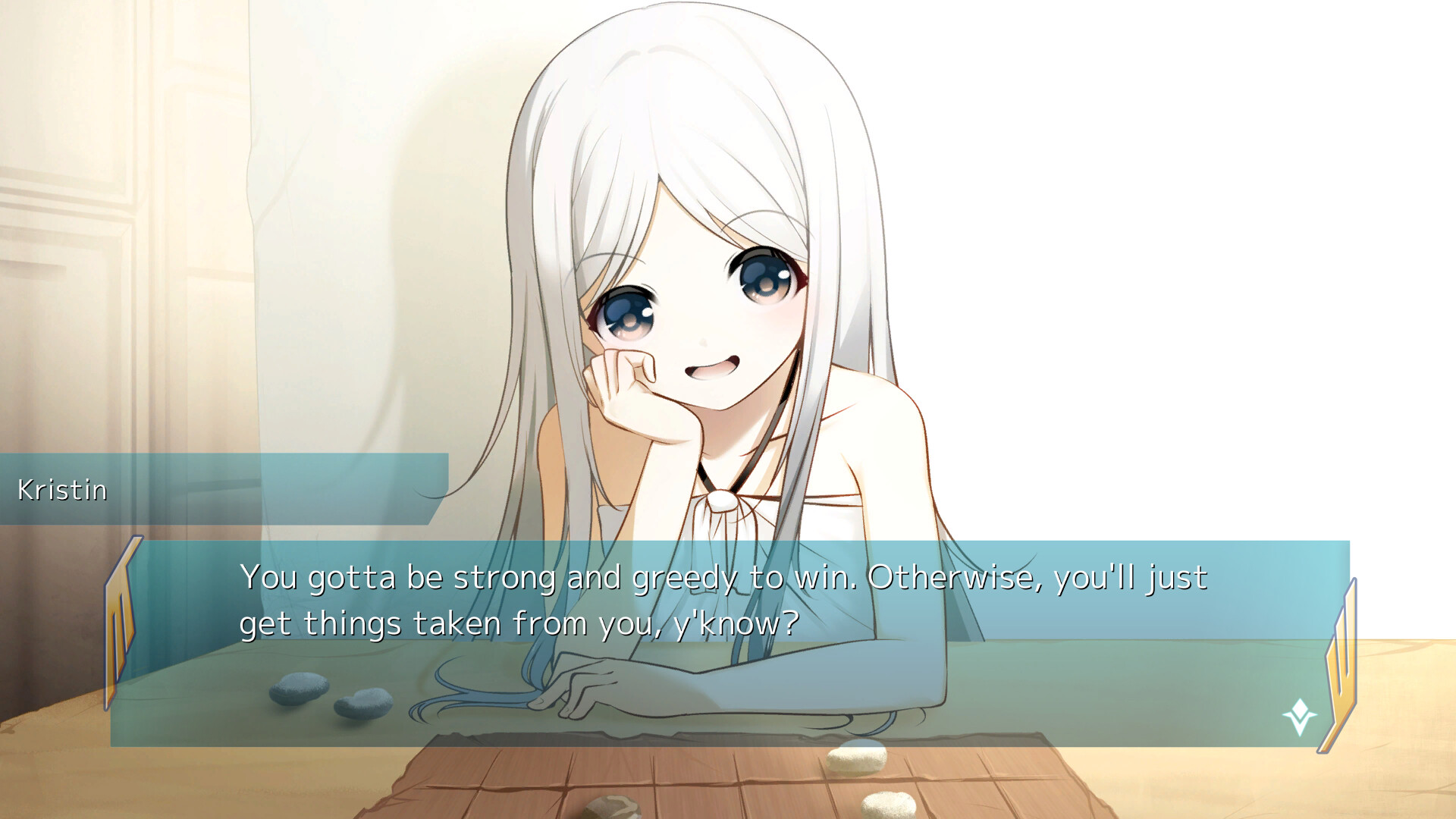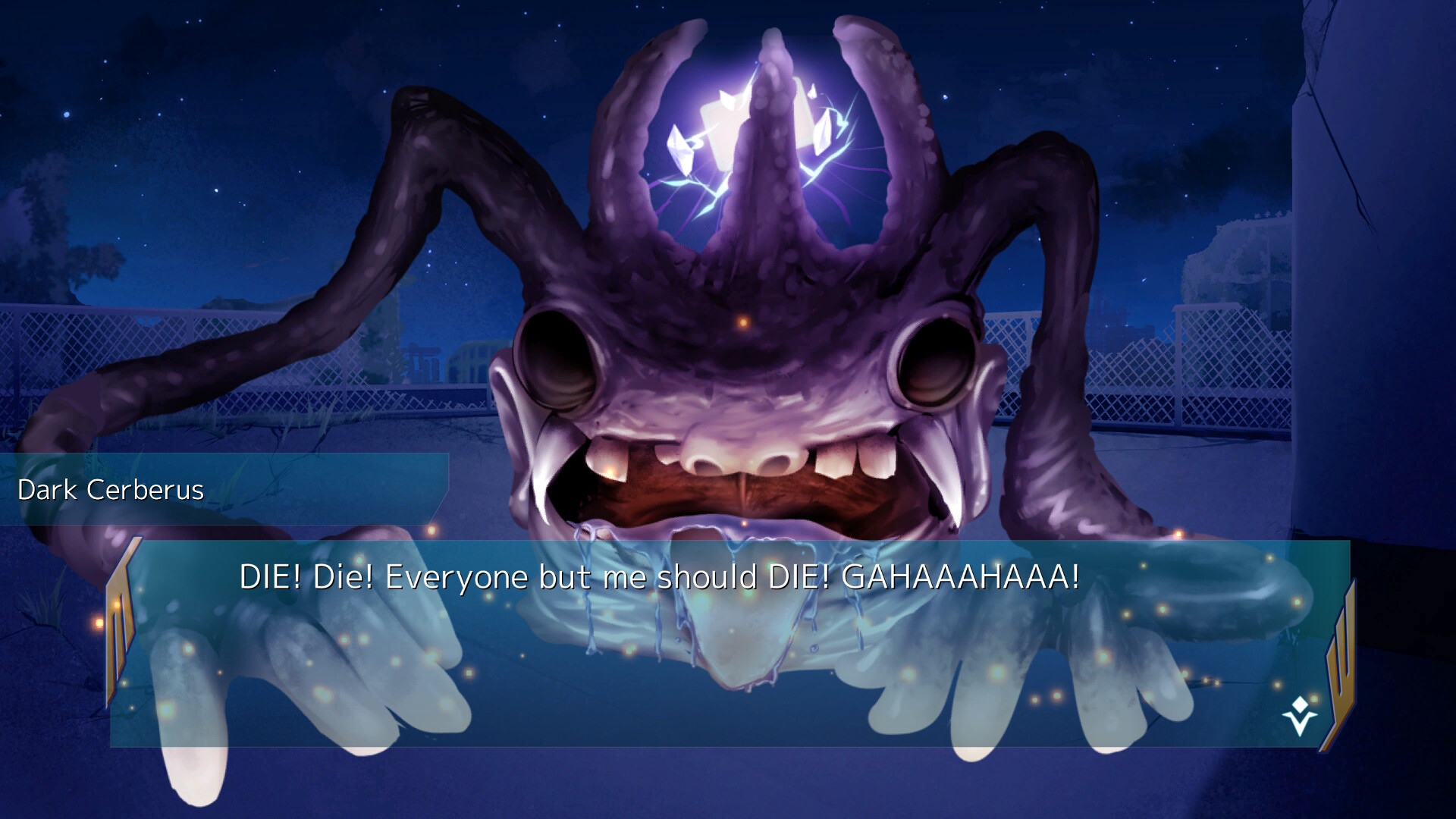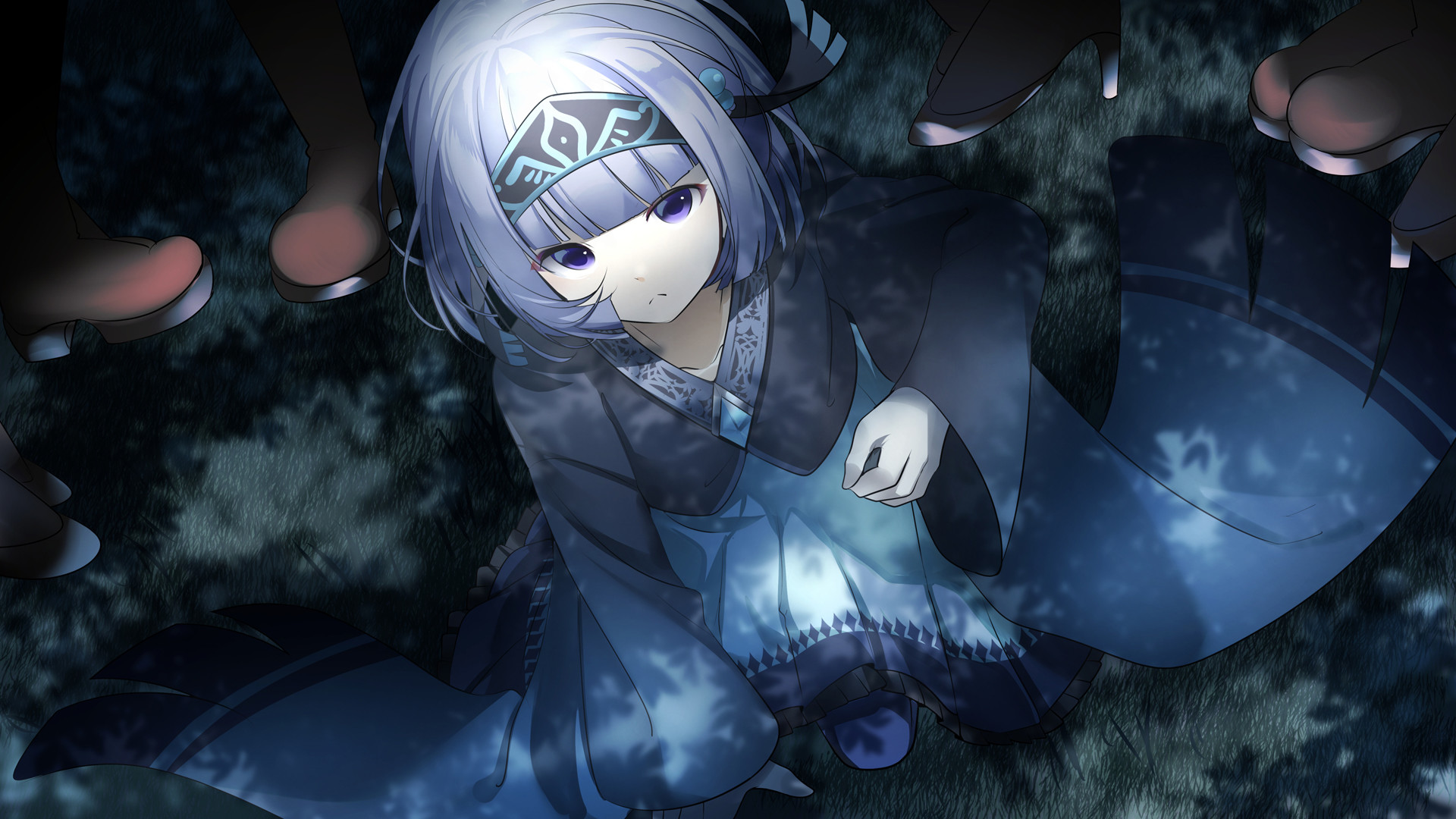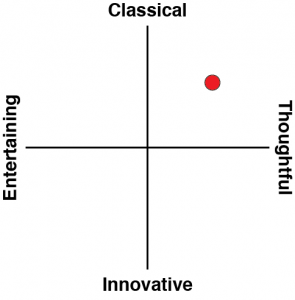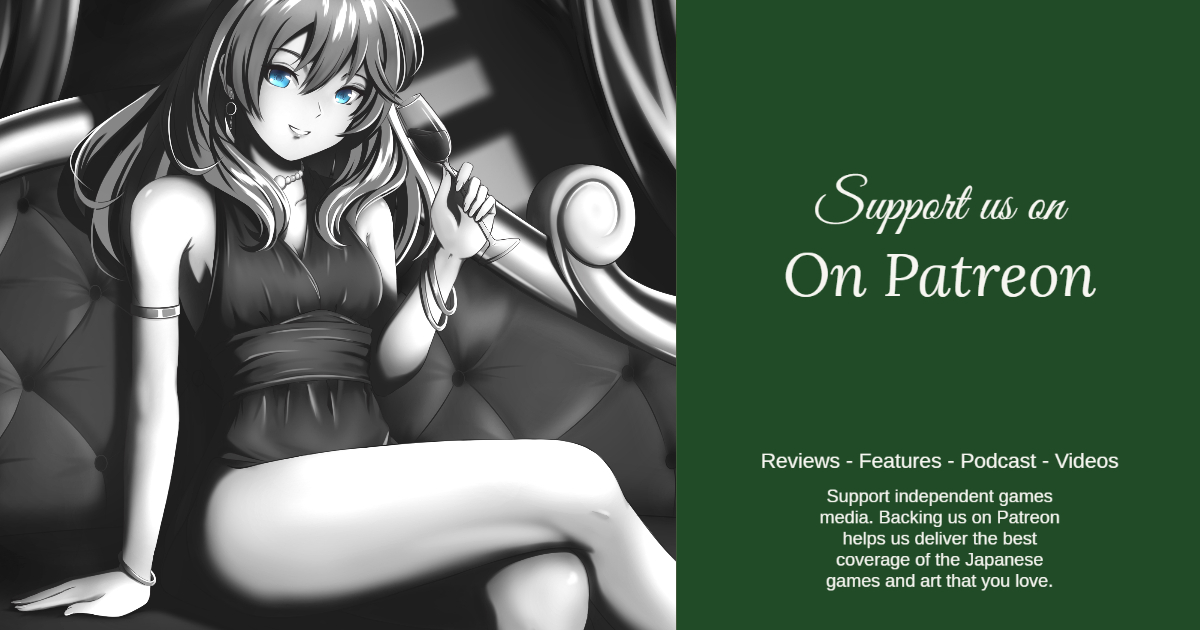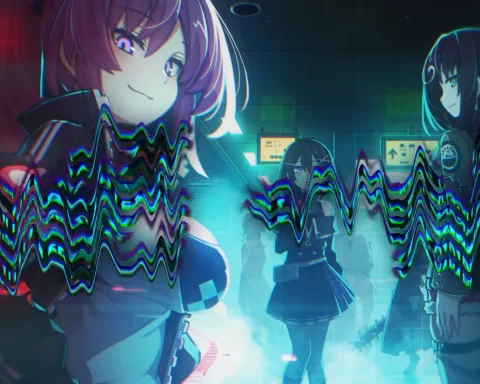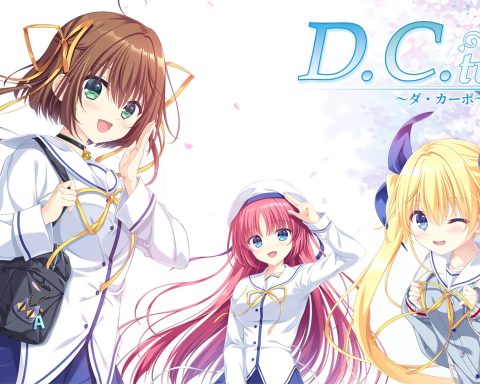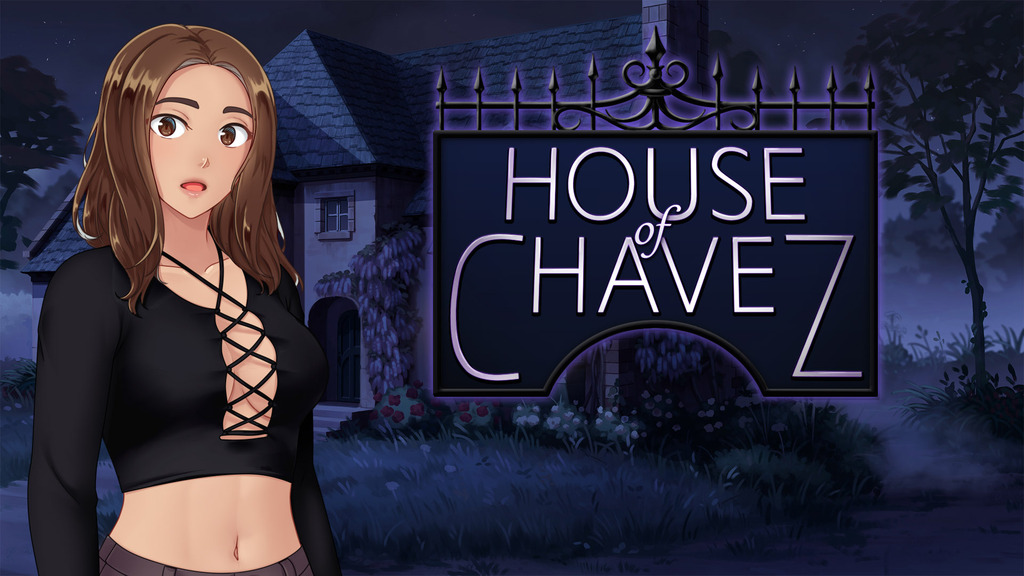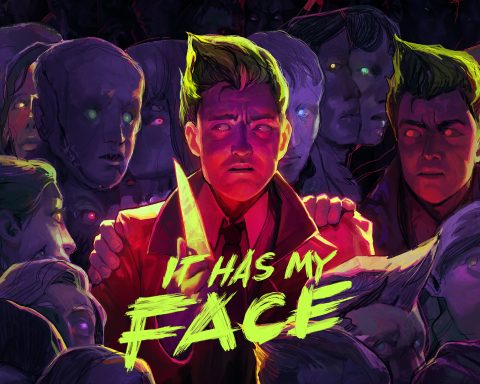Archetype Arcadia has an awful lot of content. The PR material claims 50 hours, and while I have a gut feeling that that’s assuming a fairly slow reading speed, I read quickly and I wouldn’t be surprised if I did actually spend that long getting to the end. It’s generally a good read, and could have been a truly special game, though unfortunately, the presentation undermines it a little.
The narrative concept is archetypal anime science fiction. Two people – a brother and his little sister – wander the world after an apocalypse, desperately hoping to find someone – anyone – else. Unfortunately, this was an apocalypse via disease, and it seems to have got everyone. The two never meet another living soul. Just the echoes of what people left behind. Then one evening the brother finds his sister in an unresponsive state, as though she too has been afflicted by the malady. All the brother can do is dive into a virtual reality game, which for some reason is meant to hold the answers, and participate in the violence there in an effort to find a cure for his sister.
Intriguingly, in this virtual world, he meets some other players, which does imply there are people in the real world after all. This game’s not exactly subtle about the way it expresses concern that in our haste to embrace the created universes of VR and MMOs, and our comfort with interacting with one another in there, we may be losing our sense of reality and our place within the real world. Still, it’s a worthwhile and poignant theme to explore in 2023, and this game does a decent job of contributing to the overall discourse.
Archetype Arcadia’s premise is, as you can tell from the above there, quite convoluted. It spends a lot of time in the early chapters slowly introducing characters and the many “rules” that this world exists by. For example, you’ll have to sit through what feels like an hour-long explanation of the VR world’s combat system, which involves your protagonist using cards to summon avatars, but those can shatter and then you need to collect a certain number of special glowing cards to restore them.
As you get deeper into the game, this system, and all the other rules and complexities that the narrative goes into detail to explain, do make thematic sense within a story about the bonds between the characters and the tragedies that befall them along the way. However, at first it does feel like the game developers got too caught up with conceptualising a VR MMO to actually tell the story. These digressions are exhausting.
What will help keep you invested, especially in the early stages when the story more closely resembles an MMO design document than a visual novel, is the sense of mystery to it. Every so often a strange message from… somewhere… will pop into the protagonist’s mind to tell him to “not get emotionally invested” and to “stay distant.” Why? It’s not apparent for quite some time, but those little moments are very effective in letting you know that this is building to something dramatic.
Meanwhile, the world (both virtual and real) is a hostile one, and when you pay attention to the narrative in isolation, it’s pretty intense and dark stuff. Indeed, some of the darker elements are downright horrifying to contemplate, and while you can’t really tell it from the screenshots, this game has several content warnings that players should be very aware of. Sadly, the screenshots not giving the tone of the game away is also the point: the dark themes are undermined by way too much of the art. The best example of this is the various enemies that you encounter in the virtual world. To be blunt, the art team has so effectively captured the aesthetic of the mass-market MMO in which the game is (mostly) set that the monsters aren’t intimidating, let alone the existential terror that the text represents them as. So, yes, in terms of aesthetic consistency, it works, but this game really needed the artists to channel Saya no Uta or Death Mark to properly convey its darker edges, and instead it undermines itself.
What the game does get right, however, is the character art. Each of the characters has a design that suits their personality and, most critically of all, the sister – Kristin – comes across as exactly the kind of youthful and wholesome little girl that makes the brother’s desire and need to protect her believable.
As far as interactivity goes, Archetype Arcadia dresses a lot of its moral themes up as decisions that result in either the continuation of the narrative, or a “bad ending.” Unfortunately, these are laboured and often way too obvious, making the moral questions more akin to statements. But then, this isn’t the most subtle story, despite its length, so that won’t be surprising or disappointing. You’ll save the game, activate the bad end to see what happens, and then make the “correct” choice to push on with the narrative proper.
The real question with Archetype Acadia is whether it justifies its length. With 1.6 million words in it, it’s three times the length of The Lord of the Rings. Or to mention another post-apocalyptic, dark tale filled with moral conflict, Archetype Acadia is roughly 26 times longer than Cormac McCarthy’s The Road. While it’s an imperfect comparison to make between visual novels and novels (by their nature, VNs do need to be longer), there’s just no reason that Archetype Acadia needed to be that long. It’s good, and at times even great, but slimming it down and focusing on delivering greater intensity through the art and story beats could have elevated this game to the highs of the genre.
